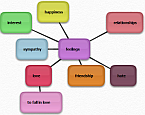Going Agile vs Waterfall Approach? Custom Project Management is Better
The question ‘What is better – Agile or Waterfall?’ remains open, even regardless that both approaches are well defined and their best practices are explored and proven for given business environments. Because different companies have different values, every organization needs to decide on either a traditional, step-by-step project management approach or an iterative-based, highly-adaptive method for planning and managing the business objectives. But is there another option, except for considering Agile vs Waterfall approach? Apparently, there is. Custom project management (PM) provides a framework that combines traditional PM methods with adaptive, iteration-driven practices. Today many businesses begin to customize the way they plan and do their business projects to tailor their PM approach to their business needs.














